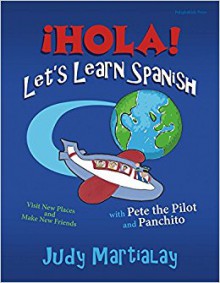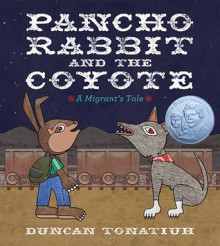
Genre: Mexico / Foreign Language / Educational / Party
Year Published: 2015
Year Read: 2017
Publisher: PoliglotKidz Press
Source: eARC (Author)

I would like to thank the author Judy Martialay for providing me a copy of this book in exchange for an honest review.
Now, I have read many children’s books that dealt with teaching children about foreign languages, but I had never read a children’s book where a term would be phrased in English and then be translated into Spanish in the same sentence and author Judy Martialay has certainly created an intriguing story that combines both Spanish and English terms in her book “Hola! Let’s Learn Spanish: Visit New Places and Make New Friends!”
Basically, this book teaches children about Mexico and its culture and language, which their language is Spanish. There is also a story woven in this book that stars a small Mexican jumping bean named Panchito who wanted to find new friends that he could play with and he ends up journeying through the marketplace and winds up at a piñata party!
What will Panchito discover at the piñata party?
Read this book to find out!
Judy Martialay has done an excellent job at creating a book that would help children understand not only about the language of Mexico, but about its culture as well and I have always enjoyed children’s books that try to teach children about foreign cultures and how to pronounce their languages at the same time. I had a lot of fun in trying to pronounce the Spanish verses for the English verses, such as “Hola” meaning “hello” in Spanish and “Los Frijoles” meaning “beans” in Spanish and I loved the way that Judy Martialay had the English verse being spoken first and then the Spanish translation for that verse coming right after the verse such as this phrase “Look! Miren!” as it helps children see how that English verse is translated into Spanish. Judy Martialay’s artwork is extremely cute to look at as the characters are rendered in scratchy and simple outlines and I enjoyed the images of Panchito himself as he is shown as a jumping bean who has stick like legs and a small hat that he wears in each panel.
The reason why I gave this book a four-star rating was because I felt that the pacing was a bit too slow at times and I sort of wished that the story moved at a faster pace in introducing us to the world of Mexico.
Overall, “Hola! Let's Learn Spanish: Visit New Places and Make New Friends!” is a great book for children in learning about Mexico and their language Spanish and would be a great book in helping children understand foreign languages! I would recommend this book to children ages three and up since there is nothing inappropriate in this book and the Spanish language is introduced in a way that would be easy for smaller children to understand.
Review is also on: Rabbit Ears Book Blog

 Log in with Facebook
Log in with Facebook 











